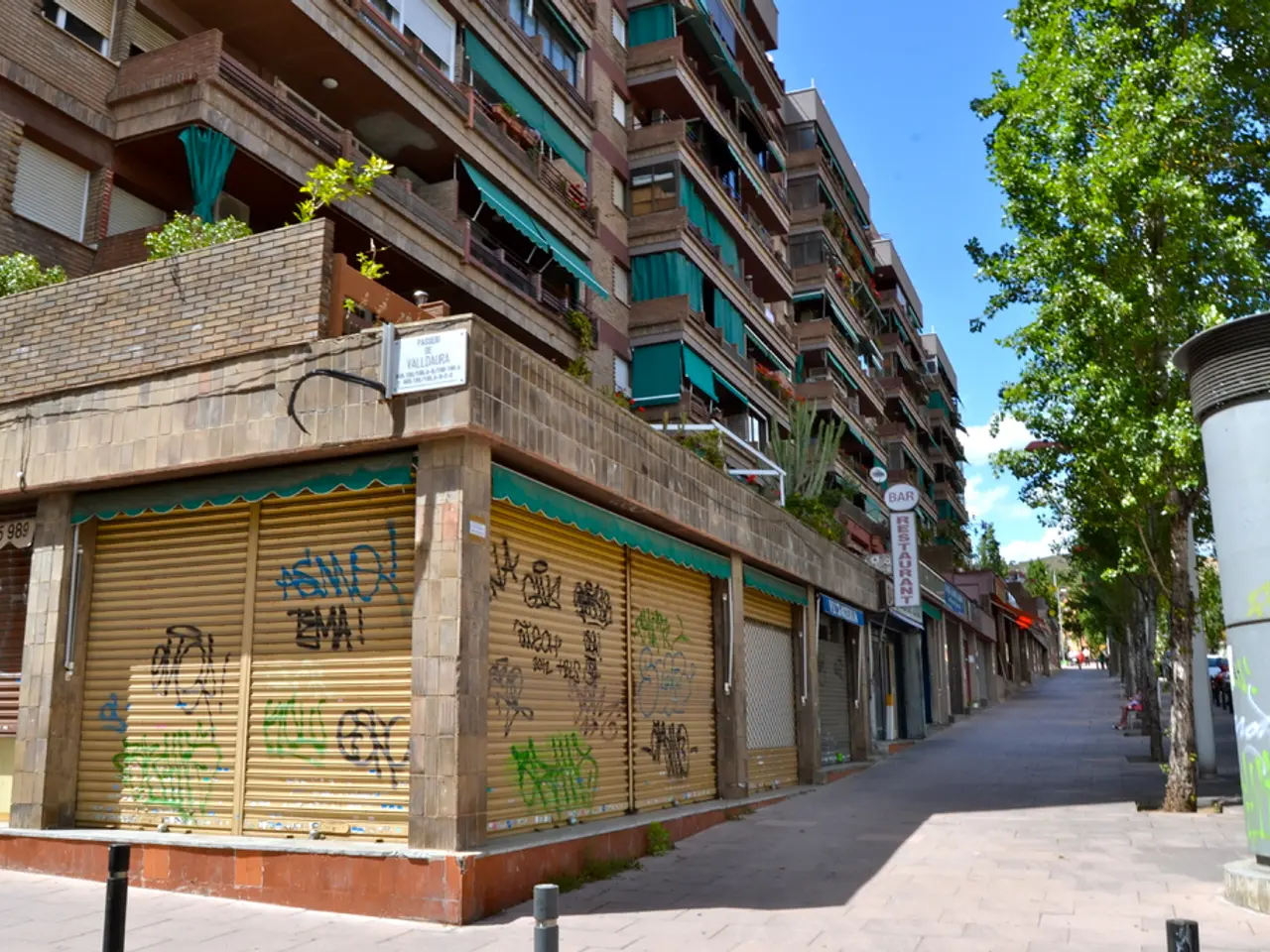Vertical garden in Karlsruhe aids in urban heat alleviation
## Green Building Facades: A Cool Solution for Urban Heat Mitigation
In a bid to combat the growing issue of urban heat, innovative green building facades are making a significant impact. One such example is the vertical garden in Karlsruhe, Germany, which has transformed a private residence and a courtyard, providing a host of benefits beyond aesthetics.
The facade of the house, built in 2022, is now dominated by various shades and hues of green, with interspersed white, purple, pink blossoms, and small red wild strawberries. The vertical garden, covering the entire wall, is a testament to the homeowner, Volker Lück’s, commitment to sustainability.
The green wall is equipped with an automatic irrigation system using black plastic drip lines, and the water for the vertical garden is sourced from an old heating oil tank that collects rainwater from the roof. Approximately 3,000 plants in the vertical garden require around 250 liters of water daily, a manageable amount for a household.
Plants release water through their leaves, a process known as transpiration, which can cool their surroundings. This natural cooling mechanism, combined with the evapotranspiration from the plants, helps to lower local temperatures and improve air quality.
The vertical garden also acts as a natural thermal insulation, reducing the amount of heat that enters the building during the summer. This can decrease the reliance on air conditioning systems, contributing to energy savings and a reduction in greenhouse gas emissions.
In addition to these benefits, the vertical garden in Karlsruhe has created a more pleasant microclimate in the courtyard. The green facade contributes to the creation of healthier microclimates within urban areas, improving pedestrian comfort and overall urban livability.
The design of the vertical garden was meticulously planned, with each individual element installed by a professional company. The plants are inserted into mineral wool, which serves as a moisture reserve, ensuring the plants receive the right amount of water.
Interestingly, the vertical garden in Karlsruhe has attracted various animals such as insects, spiders, hummingbirds, and bees, but none make their way into the house. Even swallows have been drawn to the garden, now nesting in the house’s archway.
While specific research from the Fraunhofer Institute Stuttgart, Department of Building Physics, regarding green building facades in Karlsruhe is not directly mentioned in the search results, green building facades generally play a significant role in mitigating urban heat issues.
Future research in this area could involve integrating green facades with other urban sustainability measures, such as district cooling systems or urban forestry initiatives. This holistic approach can further enhance the cooling benefits of green facades and contribute to more sustainable urban environments.
References: [1] Fraunhofer Institute Stuttgart, University of Stuttgart, and company Helix. (n.d.). Green facade for native wildflowers. Retrieved from https://www.helix-architektur.de/en/projects/green-facade-for-native-wildflowers/ [2] Greenroofs for Healthy Cities. (n.d.). 10 ways green roofs and walls combat urban heat islands. Retrieved from https://greenroofs.org/10-ways-green-roofs-and-walls-combat-urban-heat-islands/ [3] Sustainable Buildings Canada. (n.d.). Green walls: Benefits and best practices. Retrieved from https://sustainablebuildings.ca/green-walls-benefits-and-best-practices/
- In line with the commitment to sustainability, the science of environmental-science plays a crucial role in the design and implementation of green building facades.
- The beautiful and functional vertical garden in Karlsruhe, a prime example of a green building facade, also contributes to the fight against climate-change by improving the environment and reducing energy consumption.
- The lifestyle of sustainable-living is becoming increasingly popular as more homeowners integrate gardening techniques, such as home-and-garden vertical gardens, into their properties.
- As urban areas strive for a greener and more sustainable future, the integration of green building facades into plans for district cooling systems and urban forestry initiatives will be a crucial aspect of environmental-science research in the years to come.




